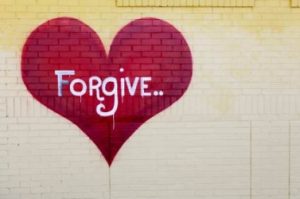 Getting fired sucks.
Getting fired sucks.
There is nothing I can say, spin, or summarize that will help you feel good about what just happened to you.
Wait, don’t stop reading! There is something in here for you; I promise.
When the company you gave your blood sweat and tears to decides to let you go, it forces you to take a hard look at yourself. That is rarely a voluntary act. Most of us do not wake up in the morning each day and say to ourselves,
“Self, I’m gonna take a hard look at you today.”
So when it’s time to take that hard look we lack practice. Where we lack practice we feel in over our head. Where we feel in over our head, we feel like we are drowning. And that feels hopeless.
This blog is going to help you make sense of what it means to be fired/let go/given your severance package early, etc. It’s going to help you take that hard look at yourself and get your confidence back. Finally, it’s going to give you tools (what good blog wouldn’t?) so you can go out and get the job of your dreams and feel like yourself again.
Dot Dot Dot
There are only a few people who have taken good, hard, looks at us: Parents, coaches, and lovers. A good hard look is that perfect combination of love and criticism. It is,
“I love you but…” or, “I love you and…”
Those dot-dot-dots are where the landmines are though. In fact, most of the criticism we heard as kids is loaded into those dot-dot-dots. This is where our ‘I DO,’ started to become our, ‘I AM.’
From Mom: I love you but…you’re a slob. You don’t do your homework, and you need to take a shower.”
You hear, “I am a slob, I am a slacker, and I stink.”
From Dad: “[I love you – this is in a bracket because although dad may have never said it, you suspect he did, in fact, love you] but…you’re lazy! If you’d just get out there and practice as hard as (insert sporty friend’s name here) you’d succeed.”
You hear, “I am lazy. I don’t measure up to ___.”
From Coach: “[definitely did not say ‘I love you.’] You sucked this week. Hit the bench. (Insert sporty friend’s name here) get in there for Dipshit.”
You hear, “I am not good enough, I am a Dipshit, I am a failure.”
Lovers (hopefully) gave a kinder look at you during courtship and early commitment phase. I really hope you heard things like,
“I love you and I need you to really notice when the trash has to go out and take care of it before I ask you.”
More likely though, no one ever took a good hard look at you in love.
MIA: Love
This great website called fathers.com reported that when they speak to groups of men, only 3% – 4% of attendees indicate they ever heard “I love you” from their dad [https://fathers.com/featured-resource-center-page/the-power-of-i-love-you-from-dad/]. Rather than a trite cliche, think of this is as a ‘missing loving message.’
Like a computer program trying to execute a task with a missing code, your brain tries to solve the problem of ‘why did I lose my job’ with a missing loving message. The efficient machine that it is, when it fails to find a loving message it simply substitutes the next best thing; the harsh criticism from the people who LOVED you. Just like that (snaps fingers) criticism, evaluation, and performance-based assessments from parents, coaches, and teachers become your inner voice. So just when you needed a shot of confidence, your helpful brain called up that inner voice that reminded you,
“I don’t measure up.”
“I am not good enough.”
“I am a failure.”
I AM Beats I DO
Lucky for you this is a quick fix. Not an easy fix, but a quick one. I’ll go Steven-Covey on you and begin with the end:
Your I AM is more important than your I DO.
Imagine you are driving down the road and you hit a puppy. You’re able to safely pull over so you go see what happened to the little guy. You weren’t going that fast and he was almost across the road but you see he’s going to need some vet attention. You decide you have some time so you take the puppy to a vet.
If this doesn’t sound like you, you’ve stuck with me this long, so keep reading.
This puppy has not done anything to earn another shot at life. It’s not some dog that rescues people from avalanches or a seeing-eye dog, it’s just some mangy puppy that wasn’t fast enough to keep up with its momma and got stuck in the road. You decide that even though it hasn’t done anything heroic or worthy, it deserves a chance to live. Because it breathes, it is worthy; it is valuable; it measures up; it is good enough.
Because it breathes. That’s a pretty low bar on the ‘performance-equals-love’ scale. Now go look in the mirror. Doing or not doing is not what determines your worth and value. You are worthy and valuable because you breathe. Ergo, losing a job cannot strip away your worth and your value.
Lucky for you (and the rest of us), we are all worthy and valuable. Worthy and valuable people can do anything.
Reality Saves the Day
Now that we have that settled it’s time to take that good hard look in love and see what you, worthy and valuable person that you are, can DO.
Get a piece of paper and a pencil. Draw a line down the middle of the paper so there is a left side and a right side. On the left side write, “things I have been criticized for.” This can be anything from you didn’t take the trash out before your partner reminded you to do it, to you struggle to get your TPS reports in on time. On the right side, write down the names you have been called or negative feelings you have had. This is anything from ‘lazy’ to ‘unmotivated’ to ‘uncaring.’
The left side is based in reality. You do struggle with certain things, we all do. The right side is the critical inner voice trying to remind you that it is in charge of your ‘I am’ and your confidence. The object is to re-train your inner voice. Here’s how it works: Lovingly remind yourself that just because you did not notice the trash before your partner did and they took it out while giving you the stink-eye does not make you lazy. It just means you didn’t notice the trash. That is a struggle you can improve. Repeat to yourself,
“I am valuable and worthy and I have struggles I can improve.”
Once you get a robust left side, you can start tackling the struggles and get on with your job search.
The Plan
This is that good hard look we’ve been alluding to. Just imagine if your dad had said,
“I love you and I notice your arm doesn’t always follow through when you throw to first base. I can tell your frustrated because you threw wide in the last game. I’ve got a bucket of balls in the back yard – want to make a few throws to me?”
Game changer.
Loving message? ✅
Validated your feelings (a frustrated kid upset about his throw) and didn’t criticize your I AM? ✅
Identified something you could change and offered a plan? ✅
I promise this blog is NOT a condemnation of your dad. He probably did the best he could just like we all do. This blog IS a place for you to learn something new though, so let’s try it out.
Step 1. Say “I love you” to yourself. I don’t care how cheesy this feels; you have to do this part. Tell yourself “I love you.”
Step 2. Identify how you feel. “I feel anxious and afraid. I’m supposed to make my family feel safe but I’ve lost my job. I feel like I’ve lost my confidence.”
Step 3. Look at reality and identify something you can change. “The company we acquired brought in their own people so I know I wasn’t let go because of my skill set. I have been putting off learning that new system though, and I know I have some new things I can learn.
Step 4: Make a plan. “I’ve been meaning to touch base with [insert the name of CEO buddy here] to see if he knows about any openings in the industry. I’ll give him a call.”
Ask for help
It is important that you make sense of what it meant to lose your job early in the game. The longer it takes you to realize it’s not about you, the longer it’s going to take to lovingly look at yourself and get your confidence back. If the tools in this blog haven’t helped you tap into what you need to get back out there, get the job of your dreams, and feel like yourself again, then make a phone call and get into some counseling. Everything is virtual now and you can literally have the session in your truck. There is no shame in asking for help so do it today and get back on track. You are valuable, you are worthy, and your family needs you.
For more resources check out my friend Dawn Owens and her book “Light After Layoff.”





